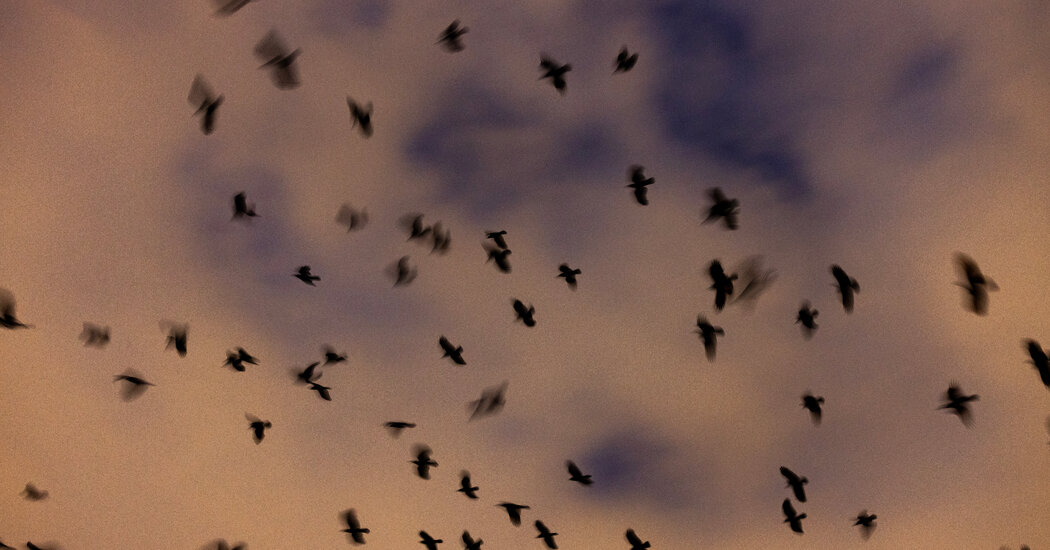In Rochester, N.Y., every year in early December thousands of crows descend on the city, which tries to shoo them away with loud noises and bright lights.
In Rochester, N.Y., there are telltale signs that the holiday season is underway.
Santa’s workshop opens at the outdoor ice rink downtown. There is the lighting of the pyramid of kegs at the local brewery. Productions of “A Christmas Carol” and “The Nutcracker” begin.
Then there are the tens of thousands of crows that descend on the city every day at dusk in early December, and the fireworks and lasers that are deployed to drive them away.
City officials and wildlife experts estimate upward of 20,000 crows roost downtown nightly.
“It’s like you’re in ‘The Birds,’” said Rachel Kudiba, referring to Alfred Hitchcock’s classic film about birds on a murderous rampage. Ms. Kudiba was one of four U.S. Department of Agriculture Wildlife Services specialists hired by the city to chase and haze the massive groups of crows.
An outbreak of West Nile virus decimated the American crow population in the early 2000s.
But no one would know it by the sight of the cawing, swirling cloud of jet-black crows over the waterfalls of the Genesee River. They come from miles around, wildlife experts say, seeking warmth in the city’s concrete grid and ambient light after foraging in fields.
The phenomenon plays out in urban centers, with reports of large roosts wintering in upstate New York cities like Albany, Auburn, and Poughkeepsie; in Danville, Ill., in the Midwest; and in Portland, Ore., and Sunnyvale, Calif., in the West.
Many cities have employed scare tactics to ward them off. But few seem as consistent in their regimen as Rochester, where the annual Yuletide ritual of shooing crows began in 2012.
